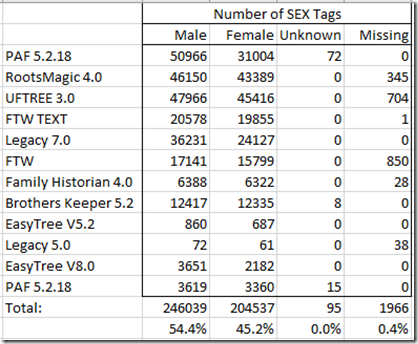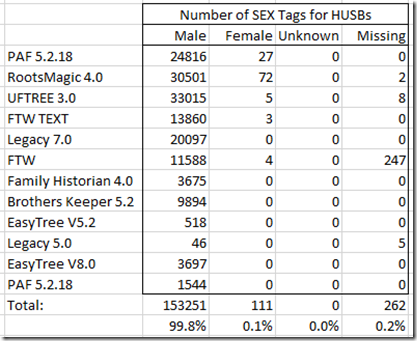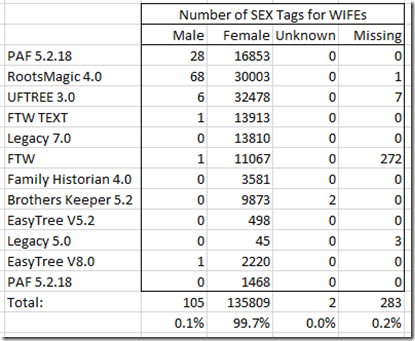My 1000’th Blog Post - Sun, 17 Jan 2016
Well, it took a little longer for me than the other prolific genealogical bloggers who I follow, but I’ve finally reached this milestone with this post.
So a time to look back at the 1000 posts.
My first post was on November 7, 2002. It was a short one just to get started. That was over 13 years ago and genealogy blogs were quite rare. Dick Eastman started his newsletter 20 years ago, in 1996. I opened my websites in January 1997 (so my websites’ 20th is coming up next year).
Back then, I didn’t realize how important it was to use a proper title for a blog post, so I used the date. It wasn’t until Oct 15, 2007 that I started used titles.
Prior to 2008, my Behold site was a subdirectory of my www.lkessler.com site. My blog was done manually with manually edited pages. In 2008, I opened up the www.beholdgenealogy.com website and built and customized the Wordpress blog that you see now. I transferred all my earlier blog posts over to this blog. I integrated it with my site and with the bbPress-based forum for Behold with single login and combined search tools. Both the blog and forum have RSS feeds for easy following.
Of my 1000 Blog posts:
- 750 were about Behold
- 54 were about GenSoftReviews
- 59 mentioned Winnipeg
- 16 mentioned chess
- 132 mention Delphi, the programming language I use for Behold
The posts that I am most proud of are the ones where I’ve reported on the various genealogical conferences that I have attended. I tried to put together interesting summaries with pictures from a genealogy software developer’s perspective. These included:
- RootsTech 2012 Salt Lake City – 12 posts Jan 23 to Feb 6
- 3rd Unlock the Past Genealogy Cruise 2013 – 11 posts Jan 26 to Feb 24
- RootsTech 2014 Salt Lake City – 10 posts Jan 29 to Mar 10
- Gaenovium 2014 Leiden, Netherlands – 2 posts Oct 11 to Oct 12
and I will be blogging about the upcoming 10th Unlock the Past Genealogy Cruise that will run from Feb 14 to March 3.
I have Google Analytics for my Behold website since I created it in 2008. Over that time, the entire site has had 370,566 page views. My blog has got over half of those at 213,712 page views with my blog home page getting 72,820 page views. Over the past year, those stats are 74,057 (203 per day) for my site, 45,194 (124 per day) for my blog and 9,142 (25 per day) for my blog home page.
My number one blog post by a wide margin according to Google Analytics had nothing to do with genealogy: It was My Torn Achilles Tendon After Nine Weeks from Oct 18, 2011 with 31,180 page views. (Just to let you know, I was playing squash again all out after 6 months, and 2 years later my leg was fully 100%.)
Numbers 2 through 10 were:
2. Family Group Sheets – Why and Wherefore? - Mar 23, 2012, 5,241 views.
3. Setting up a Solid State Drive with Windows 8.1 - May 17, 2014, 4,124 views.
4. Can Genealogy Software be Rated Fairly? - Jan 6, 2013, 3,283 views.
5. Back to Forum Five - Feb 12, 2008, 2,622 views.
6. How Good are GenSoftReview Ratings? – Jan 4, 2014, 2,508 views.
7. What Ancestry’s “Retirement” of FTM Really Means – Dec 11, 2015, 2,418 v.
8. Standardizing Sources and Citation Templates – Aug 27, 2014, 2,020 views.
9. Source Based Document Organization – Jun 9, 2013, 1,641 views
10. The Future of Genealogy – 6 Predictions – Apr 7, 2015, 1,627 views
This has been fun, and I intend to continue to blog about what I’m doing, advancements in genealogy, and where I’m going with Behold. Please stay with me and follow along as I journey towards my second thousand posts.






 Feedspot 100 Best Genealogy Blogs
Feedspot 100 Best Genealogy Blogs





